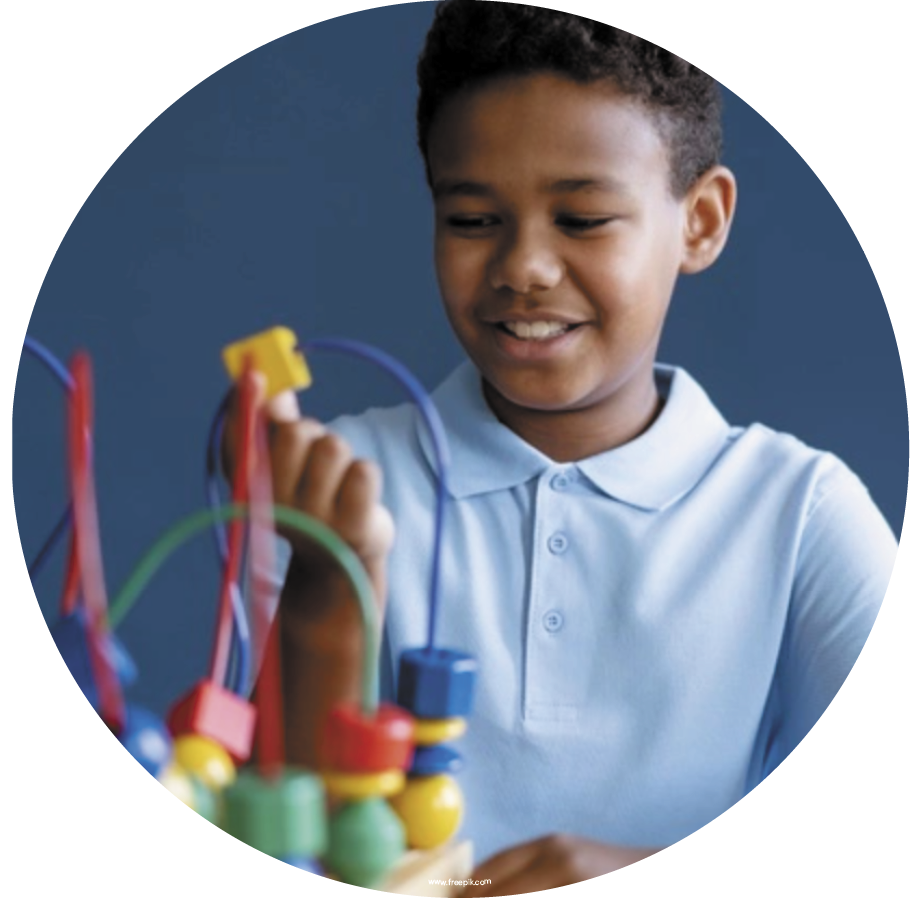When it comes to behavior-based ASD therapy, Applied Behavior Analysis (ABA) therapy is currently the only successful evidence-based methodology. Two of the main objectives of ABA therapy are to develop significant social skills and adaptive life skills.
ABA therapy uses many different techniques to successfully teach people with ASD important social and life skills. The techniques used in ABA therapy recognize the unique learning differences between every person with ASD to develop a unique program catered to individual strengths.
Let’s look at some of the most common practices utilized by ABA therapists.
Reinforcement Systems
ABA therapists often use reinforcement to teach people with ASD the (good or bad) consequences of certain actions. Constantly reinforcing practices without changing the end result teaches behaviors and skills over time.
Reinforcement systems work best when the reinforcement practices are enforced both by therapists and parents. If a behavior is only reinforced by a therapist it might not stick if a person realizes that behavior is ‘OK’ at home.
Reinforcement systems can be emphasized with rewards or punishments. Most rewards and punishments involved in ABA reinforcement are small things, like words of affirmation or giving/taking away certain privileges.
Every person with ASD is different, so ABA therapists develop unique reinforcement systems for each client. Make sure to speak to your child’s ABA therapist in order to continue the correct reinforcement systems at home.
Discrete Trial Training
Discrete Trial Training (DTT) and ABA therapy are often mixed up with one another. This is easily cleared up by clarifying that DTT is a teaching strategy often used by ABA therapists.
What is DTT? DTT is a teaching method that breaks down skills and tasks into separate discrete parts. DTT looks at larger skills & tasks and breaks them down into small steps that people with ASD can figure out one at a time and eventually combine to complete larger tasks.
DTT often employs reinforcement techniques by rewarding the completion of component tasks. The use of DTT was one of the first systems employed by ABA therapists and has extensive research supporting it’s effectiveness.
The ABCs of ABA: Antecedent – Behavior – Consequence
ABA therapists look at overall behavior patterns and how to best teach desired behaviors to individuals with ASD. The ABCs of ABA therapy is a great way to remember this methodology; Antecedent – Behavior – Consequence. Here is how the ABCs of ASD work:
- An antecedent or stimulus provokes a behavior
- The behavior happens in response
- A consequence occurs (positive or negative depending on the behavior)
Consequences used in this methodology relate to reinforcement. Behaviors that need to be encouraged or mitigated need to have consistent consequences. Again, making sure the same consequences happen in therapy and at home is extremely important. Different responses to the same behavior send mixed messages to people with ASD, making it difficult for them to respond appropriately.
Modeling
Modeling is a methodology used by ABA therapists that modes desired behaviors, skills, tasks, and other important things for people with ASD. Modeling is a visual method of therapy, seeking to teach those with ASD certain behaviors and skills through observation.
The use of modeling depends on the student, as some are more receptive to emulating skills and behaviors than others. Talking with your child’s ABA therapist is important during modeling-type teaching, as some modeling techniques may help the child at home.
Chaining
Chaining is an ABA therapy technique that divides large tasks (a chain) into smaller pieces (chain links) to make them easier to learn. Chaining has two basic therapy types–forward chaining and backward chaining.
Forward chaining is when a task is taught by showing the smaller pieces in chronological order until the full task is learned. Reinforcement is used for each small step, in order to ensure the steps are fully learned. Once all the steps are mastered, the complete task can be completed.
Backward chaining is a bit different from forward chaining. Instead of having a person with autism master each small step for a task, a therapist will help with each small step up until the last step of task completion. The behavior during the completion of the last step of the task is reinforced. Backward chaining is used when a person demonstrates the ability to complete a full task when they understand the results (due to reinforcement).
Chaining is a very effective technique, as large tasks with many steps can be hard to learn for those with autism. The basic forms of chaining, forward & backward, are used for different people after a therapist identifies the best method for that person.
For chaining to be most effective, the use of ABA task analysis is necessary.
Task Analysis
Task analysis is used by ABA therapists to learn about individual children. Instead of reinforcing or correcting behavior, task analysis provides therapists with information on which therapy methods a child will respond to. Task analysis gives a therapist data they can use for both chaining and reinforcement methods of ABA therapy.
Utilizing task analysis allows a therapist to identify the most important areas where behavior or skill improvement is needed. Task analysis is very important as it identifies critical behavior or skill issues and gives therapists the data they need to help with those areas in the best way possible.
Task analysis is the basis for which of the therapy methods mentioned will be used. Combinations of basic ABA therapy methods are also used when a therapist identifies the needs of a specific individual. Each person’s ABA therapy regimen will be different, as each person has unique strengths, weaknesses, and needs.
ABA Therapy from IABA Consultants
If you have questions regarding autism treatment, education, or plans using ABA therapy, we are here for you! Our goal is to make sure no family is turned away due to financial constraints. Our therapy team would love to talk to you. Find the location closest to you and give us a call. We’re here for you.
Sources
Autism Speaks, What is Discrete Trial Training?
National University, ABA Psychology and Autism
Regis College, ABA Therapy Examples


